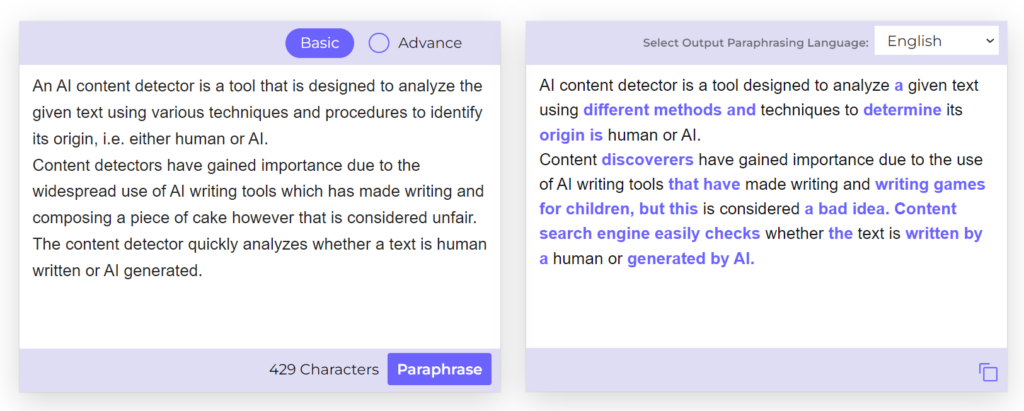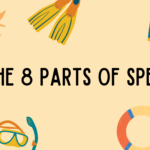When we mention paraphrasing, the first thing that comes to our mind is “eliminating plagiarism”. In fact, paraphrasing is an effective technique to avoid plagiarism in writing.
Whatever type of content you write, it should be unique and clear. In any case, despite your best efforts you may not meet this standard. In such a situation, the only thing that can help you is paraphrasing. You can paraphrase your content to eliminate plagiarism and make it completely unique. You can do more with paraphrasing. You can use paraphrasing to make your content clearer and more engaging.
Whether you paraphrase yourself or use AI, the goal is to achieve uniqueness and achieve clarity.
Keep reading this quick guide to learn how paraphrasing can help prevent plagiarism and improve content quality. We will also discuss effective methods of paraphrasing with and without artificial intelligence.
How Does Paraphrasing Avoid Plagiarism?
Paraphrasing adjusts the content to make it unique, removing all traces of plagiarism.
Usually, paraphrasing is believed to be about replacing synonyms and restructuring sentences. However, this is not true. Paraphrasing requires a complete change in wording, structure, and organization.
Simply put, paraphrasing tries to change the following elements of writing to avoid plagiarism:
- vocabulary
- sentence structures
- syntactic forms
- heading structure
- reporting
- organization contact
Let’s make it more clear for you to understand. If you want to avoid plagiarism in your writing, you need to paraphrase everything that makes it up.
The way you choose your words, the way you construct your sentences, the way you string your sentences together, the way you organize your paragraphs, and the way you organize of your information – all paraphrased to achieve uniqueness.
When you rewrite everything that makes up a piece of writing to express its meaning in a better way, then plagiarism is automatically eliminated. Unique words, zero plagiarism.
Also Read: Does Paraphrasing Avoid Plagiarism?
How To Paraphrase Without Plagiarizing?
This is the most confusing but important question. If your main goal is to eliminate plagiarism, you need to use paraphrasing techniques that specifically focus on achieving uniqueness in writing.
However, you can also use a paraphraser to eliminate plagiarism. Paraphrasing tool will automatically rewrite duplicate content. It will replace words with their synonyms to differentiate them from the source content.

There are many ways to paraphrase for plagiarism removal but not all other methods can be as effective. You must be strategic in the way you paraphrase your content. The thing is that you can paraphrase effectively if you only use one or two techniques, one at a time. You need to use all the techniques together to paraphrase with the highest level of accuracy.
Let’s explain the methods you can follow to paraphrase without plagiarizing:
Substitute Appeal Synonyms
The best thing you can do to paraphrase a statement is substitute synonyms. Not any random synonym, but catchy.
You need to find the parts of a sentence that don’t seem to appeal to readers. There may also be some parts that are difficult to understand. It can be any sentence structure including words, phrases, and clauses that you can replace. For example, you can change the phrasal verbs that make up the predicate or even change the subject. You can also substitute synonyms to replace adjectives and complements.
Any of the constituents of the sentence can be replaced only if its replacement does not change the meaning.
Remember that the main purpose of changing synonyms is to perfect diction and tone. Simply put, you can change the choice of words to improve the quality of the content. This ultimately helps to avoid plagiarism and change the writing style if necessary.
Change the Syntactic Voice
Sentences can be written either in active voice or passive voice. You can change the voice of the sentences to rearrange them in a unique way.
This is a commonly used method of paraphrasing. All it needs is the conversion of syntactic voice. If the original statement was written in active voice, you can change it to passive voice or vice versa.
Most of the sentences are made in active voice because it can be difficult to read a statement. Therefore, you need to make sure that changing the voice of a sentence does not affect its readability.
You need to carefully analyze your content to filter out sentences that can be arranged in a different voice. When you succeed in implementing this strategy, the chance of plagiarism will be significantly reduced.
Change Subject
Here’s another trick for you to avoid plagiarism: use a different topic.
When you paraphrase a statement, you can change its subject to sound different. You can use a pronoun or just use a symbolic term in the subject area.
In this way the respective statement becomes different than before as if it was developed in a completely different way.
You should not change the subject matter enough to convey the intended meaning. In such a case, there may be some other ways to make your statements unique such as rearranging words (phrases/clauses) within sentences.
Also read: How to Paraphrase a Sentence?
Reorganize Information
Once you have implemented all the paraphrasing techniques to make unique statements and passages, your final focus should be on organizing all the information in a unique way.
Your efforts won’t pay off if your content layout matches another resource. This will be considered paraphrasing plagiarism. So, if you don’t want that to happen, be sure to give your content a unique structure.
The heading structure, the paragraphing style, and the overall layout, should all be exceptional.
Note that each passage must also have a unique structure. The sentences you choose to quote and the way they are compiled should be different from the original source.


